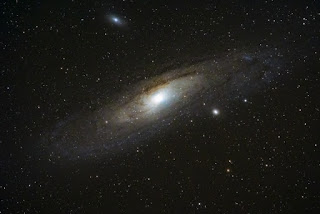Jupiter and Saturn will be closest in 800 years, and return of the miraculous star of Bethlehem
Scientists say that on the night of December 21, the two major planets in the solar system, Jupiter and Saturn, will merge in such a way that they will look like a double planet to the human eye.
This scene can be seen all over the world including Pakistan on the night of December 21 provided the weather is clear.
And this time the reunion is taking place at a time when some believe it was the source of the bright light seen in the sky 2,000 years ago, now known as the Star of Bethlehem.
The two planets will be seen very close on the night of December 21, completing their orbits close to each other.
In the UK, too, star observers will keep a close eye on the weather to avoid astronomical disappointment so that they can see the scene with their own eyes.
Caroline Crawford, of the Cambridge University's Institute of Astronomy, told that if it appeared in the evening, it was a sight to behold, but this time the weather was not clear.
If the December weather doesn't disappoint, the two planets will be visible in the southwestern part of the sky immediately after sunset.
Both planets will appear in the southwestern sky just above the horizon immediately after sunset.
Some astronomers and religious leaders believe that this star is the return of Bethlehem.
According to an online article by Professor Eric M. Wenden-Eckel, a professor of religion at Froome College in Virginia, the time the two planets met has led to many speculations as to whether this is the same astronomical scene that the Bible describes. It is also mentioned that because of this star, the wise people turned to Hazrat Yusuf, Hazrat Maryam and their newborn children Jesus.
This is nothing new, but old speculation. The idea that Jupiter and Saturn could actually be a "miracle star" was first proposed in the 17th century by Johannes Kepler, a German astronomer and mathematician.
According to Dr. Caroline Crawford, 2000 years ago, people were aware of what was happening in the night sky. So it's not impossible that Bethlehem's 2,000-year-old miraculous star is a similar combination of planets.
Since the planets travel around the sun in their orbits, such a combination is not uncommon, but the combination of the two planets is a special occasion.
Tim O'Brien, a professor of astrophysics at the University of Manchester, told the BBC that the intersection of planets is a special thing. And such a combination often happens, but the combination of these two planets with each other is a very remarkable thing.
These two planets, in fact one of the largest and brightest bodies in our solar system, have not come so close to each other for 800 years. According to weather forecasters in the UK, this may not be the most favorable weather for astrologers, but it could change.
According to Professor Tim O'Brien, this situation changes over the hours. This is the weather in the UK and this is the science of astronomy for you.
These planets will set in the southwest, so you have to get out as soon as the sun sets.
According to him, "none of us will live another four hundred years, so keep an eye on the weather and if you get the chance, go out of the house to see this miraculous star."

Comments
Post a Comment
Please do not enter any spam link in the comment box